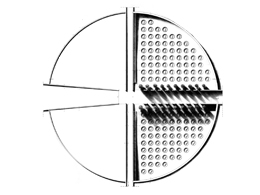STUDENTS PROJECTS
PROJECTS2013

13 April, 2015
Buffer zone. The land of living
Memorial space inside. The buffer zone in Nicosia, Cyprus.
Student : Anaxagorou Tatiana
Professors : Β.Xenou, Κ.Μoraitis
National Technical University of Athens
Presentation date : 7th of November 2014

The subject of this thesis is to design a memorial burial space. It takes place inside the 'Buffer Zone', in the so-called 'Dead zone', which divides Cyprus in two areas of national sovereignty. The aim is to provide a common space for the dead of both people, Greek Cypriots and Turkish Cypriots. Monumental space based on the concept of memory, the shared history of the two peoples and the common memory of death.
The possibility of death is one of human's biggest and unsurpassed fears, which that explains his avoiding from the burial space. Therefore, in this thesis is been investigated the enlargement of the importance of a burial space with emphasis to the meaning of "Επέκεινα" ("Beyond"). With this sense the space acquires a further significance for the human being; it can be an area which arouses emotions that overcome the fear of the death, such as the great pyramids of Egypt. Which, beyond that they are the royal tombs; they are projecting the overall faith of the ancient Egyptians to society, politics and ultimately the meaning of death.
It is strange, though, because a place that celebrates the death placed in the 'Dead Zone', a point also to avoid in the city, but right here there is the challenge of this thesis. In the light of "Επέκεινα" ("Beyond"), the main purpose is to create an experimental landfill. Once the residents of Cyprus will pass in this area, they will enter a neutral zone, a monumental burial site which will display something beside a burial place a walk, a public passage. Equating, so the 'Dead Zone' with the concept of death as death recruited by Sikelianos, not as a dead point but as the center of everything.
The present thesis focuses on the island's capital named Nicosia, which with the 'Buffer Zone' separating the town, still remains the only divided capital in the world. Specifically, concentrates on the center of this town where three morphological limits come to meet: the 'Buffer Zone', the medieval walls of the old city and the river Pediaios. Based on the morphological analysis of Nicosia was made the choice of location the burial space at that point exactly the intersection between the river and the 'Buffer Zone'.
The landfill refers to two different religions, Greek Orthodox and Muslims come to coexist together. Something that is not so strange for the people of Cyprus, as before the war of 1974 there was mixed villages where people of both religions were living together peacefully. Mosque and Church were side by side, creating a common prayer place. However, although the design of the propose contains the necessary functions for the creation of a complete Greek Orthodox and Muslim landfill, the inspiration of the total area associated with items that are revived by the depth of the history of Cyprus.
Particularly, through the study of funeral objects from the Chalcolithic Era came the idea of the circular form, in the first point of the burial monument and then the total area, as shown in the drawings below. The place of the dead in the ancient times was famous and well known, it was an open area, and a safe meeting place. So that in the thesis is designed a meeting place for the two people, between the living and the dead, but also it is connecting the past with both present, and future.
The process of the synthetic design began by creating three hemispherical scale models, representing the three spatial units of the original synthetic structure. But then the second section abandoned and replaced by the connection of two circular areas, which it is also a passage from Pedieos River. In the end of the spatial arrangement is the 'Rise', a theatrical style space where is the oversight. There the individual is called to realize the common fate of all the people, that either comes from the one or the other burial space comes from a common land.
The materials that constitute the architectural proposal are the exposed concrete for the circular areas and Corten -oxidized iron on the circular contour of the funerary monument and the outer lining of the bridge. Furthermore, the bridge made of gabions which create artificial 'hills' in the river, which are connected by a light metal structure which also carries a wooden floor. Finally, an important point is the fact that apart from the preparation areas of the dead the rest of the proposal concerning open public spaces.







Related articles:
- “nekron topio” ( 29 April, 2011 )
- Texas American Society of Landscape Architects Student Competition ( 18 April, 2012 )
- Cemeteries in the cities ( 24 January, 2015 )










